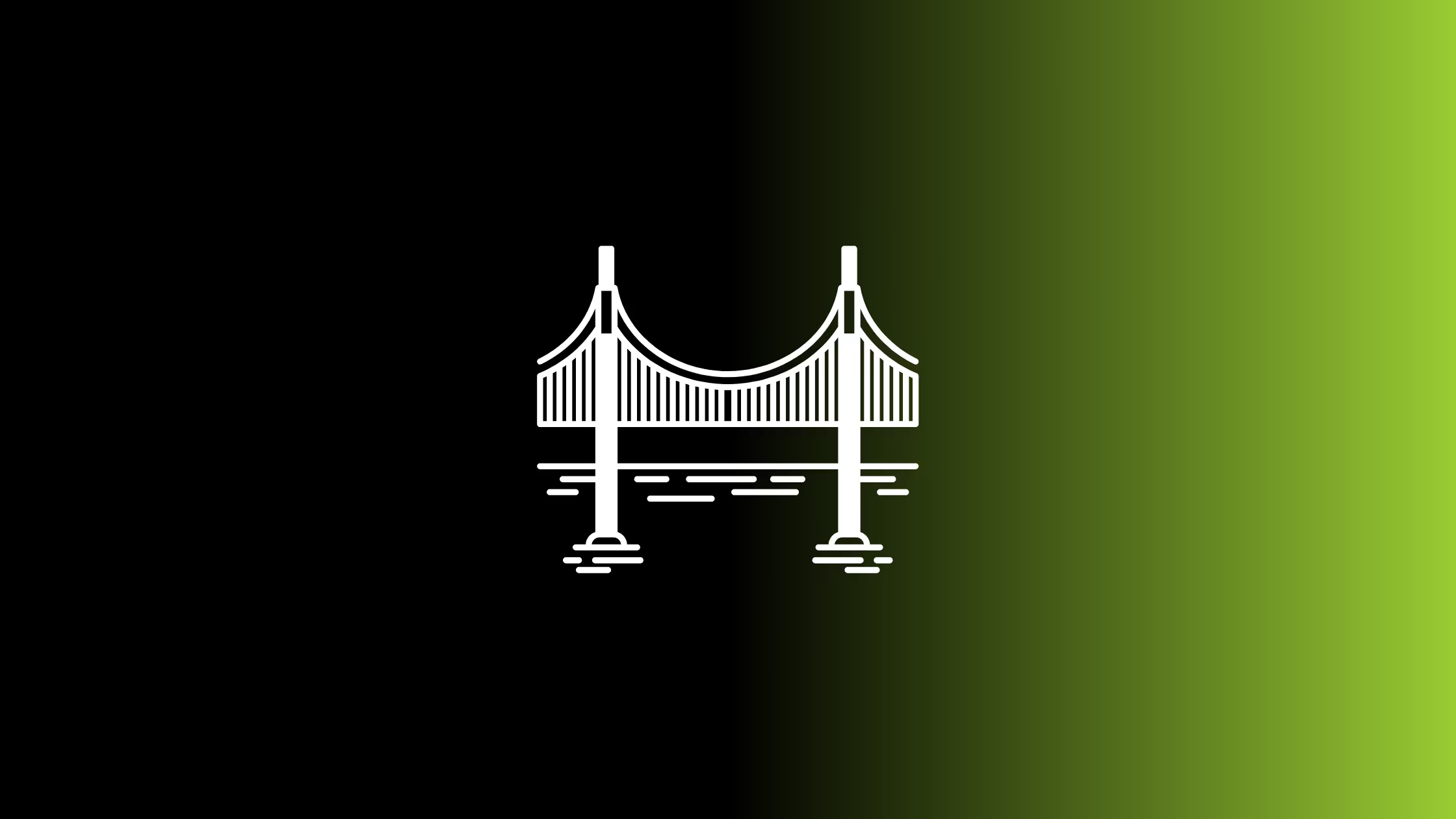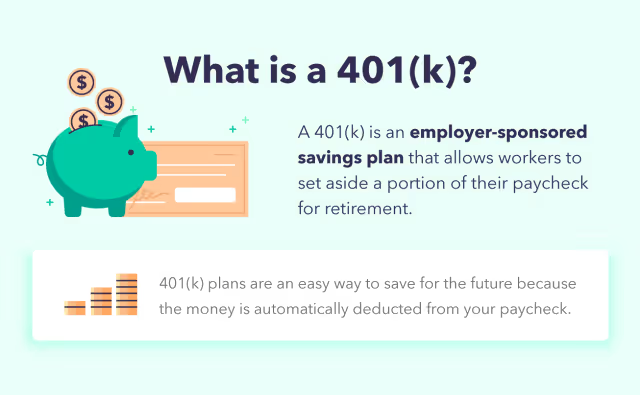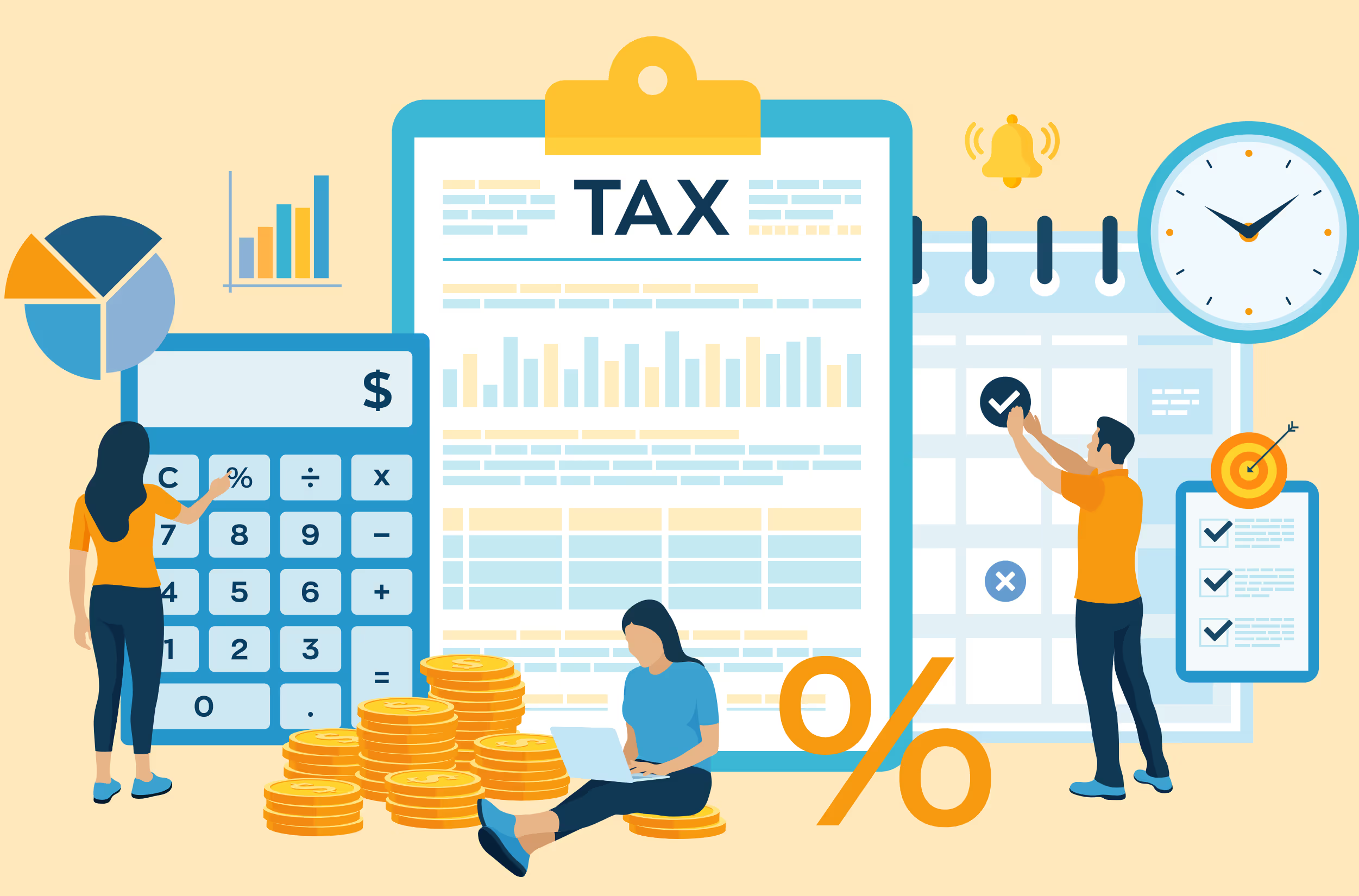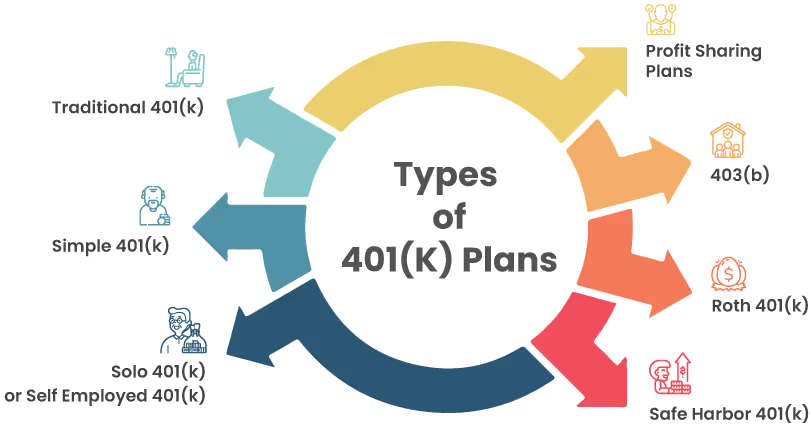How Technology Bridges the 401(k) Knowledge Gap for Employees

A 401(k) retirement plan is a type of employer-sponsored, tax-advantaged retirement savings account that allows employees to contribute a portion of their pre-tax earnings to invest in various assets, such as stocks, bonds, and mutual funds. The name "401(k)" refers to the section of the U.S. Internal Revenue Code that governs these plans.
Employers may choose to match employee contributions up to a certain percentage, which can provide an additional incentive for employees to save for retirement. Contributions and any earnings on the investments within the account grow tax-deferred until they are withdrawn at retirement. Withdrawals made after the age of
A 401(k) plan provides a flexible and convenient way for employees to save for retirement, as contributions can be adjusted or stopped at any time, and many plans allow for loans to be taken against the account balance.
However, it is important to be aware of any applicable fees, investment options, and restrictions associated with a particular 401(k) plan to ensure it aligns with one's retirement goals and risk tolerance.
Addressing common employee questions and concerns about 401(k) plans is important for several reasons:
- Encourages participation: Educating employees about the benefits of participating in a 401(k) plan, such as tax advantages, employer matching, and long-term growth potential, can encourage them to enroll and contribute regularly. This helps employees prepare for a secure financial future.
- Fosters financial literacy: Providing clear and concise information about 401(k) plans helps employees better understand the basics of personal finance, investing, and retirement planning. This knowledge can empower them to make informed decisions about their financial future.
- Reduces misconceptions: Addressing common misconceptions or misunderstandings about 401(k) plans can help employees avoid costly mistakes, such as not taking full advantage of employer matching, making premature withdrawals, or failing to diversify their investments.
- Builds trust and engagement: When employers take the time to address employee questions and concerns, it demonstrates a commitment to their well-being and fosters a sense of trust and engagement in the workplace. This can lead to improved job satisfaction and retention.
- Supports regulatory compliance: Employers have a legal obligation to provide accurate and timely information about their 401(k) plans to employees. Addressing questions and concerns helps ensure compliance with regulations, reducing the risk of potential legal issues or penalties.
- Facilitates informed decision-making: By addressing common questions and concerns, employees are better equipped to make informed decisions about their contributions, investment selections, and overall retirement planning strategy.
- Enhances plan performance: When employees understand the benefits of their 401(k) plan and are actively engaged in managing their investments, it can lead to better overall plan performance. This benefits both employees and employers, as employees achieve greater financial security, and employers benefit from a more satisfied and stable workforce.
Overview of 401(k) plans and their purpose
A 401(k) plan is an employer-sponsored retirement savings account that allows employees to contribute a portion of their pre-tax earnings to invest in various assets, such as stocks, bonds, and mutual funds. These plans are governed by the U.S. Internal Revenue Code.

Role of 401(k) plans in retirement savings strategy: A 401(k) plan is a key component of an individual's long-term retirement savings strategy, providing a tax-advantaged way to save and invest for retirement while potentially receiving employer contributions.
Key features and benefits of 401(k) plans: These include tax-deferred growth, employer matching contributions, flexibility in adjusting or stopping contributions, and the ability to take loans against the account balance.
Explanation of employee and employer contributions
- Employee contributions: Elective deferrals are the contributions made by employees from their pre-tax earnings. For 2021, the maximum annual contribution limit for employees under 50 years old is $19,500, and for those 50 and older, it's $26,000 (including a $6,500 catch-up contribution)
- Employer contributions: Employers may choose to match employee contributions up to a certain percentage, which can provide additional incentives for employees to save for retirement. Employer contributions can be structured in different ways, such as a fixed percentage match or a discretionary contribution based on company performance.
- Vesting: Employer contributions may be subject to a vesting schedule, which determines when employees gain full ownership of these contributions. Vesting schedules can be immediate or gradual, with employees earning a certain percentage of ownership each year until they are fully vested.
Tax advantages and benefits of participating in a 401(k) plan

- Pre-tax contributions: Employee contributions are made with pre-tax dollars, reducing their taxable income for the year and potentially lowering their overall tax liability.
- Tax-deferred growth: Earnings on investments within a 401(k) account grow tax-deferred, meaning employees do not pay taxes on these earnings until they withdraw the funds in retirement. This allows for potentially greater growth over time due to compounding interest.
- Employer matching contributions: When employers offer a matching contribution, it is essentially "free money" that employees can receive by contributing to their 401(k) plan. This additional contribution can significantly increase an employee's retirement savings over time.
- Loan provisions: Many 401(k) plans allow participants to borrow money from their account balance under certain conditions, providing a source of funds in case of financial emergencies.
- Rollovers: If an employee changes jobs, they can typically roll over their 401(k) balance into a new employer's plan or an individual retirement account (IRA), preserving the tax-deferred status of their retirement savings.
Required Information Employers Must Provide Employees about 401(k) Plans
The Summary Plan Description is a comprehensive document that employers must provide to all participants in a 401(k) plan. The SPD serves as a detailed guide, outlining the key features and rules of the plan. It should be written in clear, understandable language and include the following information:
- Plan name, sponsor, and administrator
- Eligibility requirements for participation
- Explanation of employee and employer contributions
- Vesting schedules for employer contributions
- Investment options and associated fees
- Procedures for accessing funds, including loans and distributions
- Processes for making changes to contributions and investment allocations
- Claims and appeals procedures
- Plan termination or amendment provisions
Employers are required to distribute the SPD to new participants within 90 days of enrollment and to all participants every five years if the plan has been amended, or every ten years if no amendments have been made.
Annual Report (Form 5500)
Employers are required to file an annual report, typically using Form 5500, with the Department of Labor (DOL) and the Internal Revenue Service (IRS). The annual report provides an overview of the 401(k) plan's financial status and helps ensure regulatory compliance.
Key components of the annual report include:
- Total plan assets and liabilities
- Contributions made by employees and employers during the plan year
- Investment performance and fees
- Administrative expenses
- Participant loan activity
Form 5500 is usually due by the last day of the seventh month following the end of the plan year. For example, if the plan year ends on December 31, the Form 5500 would be due by July 31 of the following year. Participants have the right to request and review a copy of the annual report to monitor the health and performance of their 401(k) plan.
Importance of transparency and clear communication in plan administration
- Fosters trust and engagement: Transparent and clear communication about a 401(k) plan helps build trust between employers and employees, leading to higher participation rates and employee satisfaction.
- Facilitates informed decision-making: Providing accurate and timely information allows employees to make informed decisions about their contributions, investment selections, and overall retirement planning strategy.
- Supports regulatory compliance: Clear communication helps ensure that employers are meeting their legal obligations to provide accurate and timely information about their 401(k) plans, reducing the risk of potential legal issues or penalties.
Common Employee Questions about 401(k) Plans
How much should I contribute to my 401(k) plan?
- Factors to consider: The ideal contribution amount depends on an individual's financial situation, retirement goals, and risk tolerance. Employees should consider their income, expenses, projected retirement needs, and other sources of retirement income (e.g., Social Security, pension, or personal savings) when determining their contribution rate.
- Employer match: It is generally recommended that employees contribute at least enough to take full advantage of their employer's matching contribution, if offered. This is essentially "free money" that can significantly boost retirement savings.
- Contribution limits: Employees should be aware of annual contribution limits set by the IRS. As of 2021, the maximum annual contribution for employees under 50 years old is $19,500, while those 50 and older can contribute up to $26,000 (including a $6,500 catch-up contribution).
What investment options are available in a 401(k) plan?
- Plan-specific options: Investment options in a 401(k) plan vary depending on the specific plan offered by the employer. Common options include a mix of stocks, bonds, mutual funds, and target-date funds. A 401(k) plan typically provides a variety of investment options for participants, catering to different risk tolerances and investment goals. These options generally fall into four main categories:
- Stock Mutual Funds: These are funds invested in the stocks of various companies, providing potential for high returns, but also a higher risk.
- Bond Mutual Funds: Less risky than stock funds, these are invested in corporate or government bonds, providing a steady income stream.
- Money Market Funds: These are low-risk funds invested in short-term debt investments, providing modest returns.
- Target-Date Funds: These automatically adjust the mix of stocks, bonds, and cash equivalents based on your retirement date, starting aggressive and gradually becoming more conservative as you near retirement.
- Diversification: Employees should aim to diversify their investments to reduce risk and optimize potential returns. This involves spreading investments across different asset classes and sectors.
- Risk tolerance and investment horizon: Employees should consider their risk tolerance and investment horizon (time until retirement) when selecting investment options. Younger employees with a longer investment horizon may be more comfortable taking on higher-risk investments, while older employees nearing retirement may prefer more conservative options.
Can I take a loan from my 401(k) plan?
- Loan provisions: Many 401(k) plans allow participants to borrow money from their account balance, subject to certain conditions and limitations. The specific loan provisions depend on the plan's rules and regulations.
- Repayment and interest: Borrowers typically must repay the loan, with interest, within a specified period, usually five years. The interest paid goes back into the borrower's 401(k) account. Failure to repay the loan on time may result in taxes and penalties.
How does vesting work in a 401(k) plan?
- Definition of vesting: Vesting refers to the process by which employees gradually gain ownership of their employer's contributions to their 401(k) plan. Employee contributions are always 100% vested.
- Vesting schedules: Employers may use different vesting schedules for their matching contributions. Common schedules include immediate vesting, graded (or graduated) vesting, and cliff vesting. With graded vesting, employees gain a certain percentage of ownership each year until they are fully vested, while cliff vesting grants full ownership after a specific period of continuous service.
What happens to my 401(k) plan when I change jobs?
- Rollovers: When changing jobs, employees have several options for managing their 401(k) account. They can typically roll over the account balance into a new employer's 401(k) plan or an individual retirement account (IRA), preserving the tax-deferred status of their retirement savings.
- Leaving the account: In some cases, employees may choose to leave their 401(k) account with their previous employer, as long as the account balance meets the minimum threshold set by the plan.
- Cashing out: Employees can also choose to cash out their 401(k) balance when changing jobs, but this is generally not recommended due to potential taxes and penalties
Leveraging Technology to Address Employee FAQs

Technology solutions for 401(k) plan administration
- Digital transformation: Technological advancements have made it easier for employers to manage 401(k) plans and address employee questions and concerns. These solutions can improve efficiency, provide personalized guidance, and encourage informed decision-making among employees.
- Integrated platforms: Technology solutions often involve integrated platforms that combine plan administration, investment management, recordkeeping, and participant communication in a single, user-friendly interface.
Online resources and tools for employees to access plan information
- Online portals and apps: Employers can provide employees with secure online portals or mobile apps that allow them to access plan details, monitor their account balance, review investment performance, and make changes to their contribution rates and investment allocations.
- Electronic communication: Employers can use email, text messages, or push notifications to keep employees informed about important plan updates, deadlines, or changes, ensuring timely and relevant communication.
- Educational resources: Employers can leverage technology to deliver educational resources, such as articles, videos, or webinars, to help employees better understand their 401(k) plan and make informed decisions about their retirement savings strategy.
Benefits of interactive calculators and retirement planning tools
- Personalized guidance: Interactive tools and calculators can provide personalized guidance for employees by taking into account their unique financial situation, retirement goals, and risk tolerance
- Estimating retirement income needs: These tools can help employees estimate their retirement income needs based on factors such as projected expenses, life expectancy, and other sources of retirement income.
- Assessing risk tolerance: Employees can use risk assessment tools to identify their risk tolerance and align their investment strategy with their financial goals and comfort level.
- Goal setting and tracking: Retirement planning tools can help employees set savings goals and track their progress over time, providing a clear roadmap for achieving their retirement objectives.
Using chatbots and AI-powered platforms to provide real-time answers to employee queries
- Chatbot technology: Chatbots are AI-powered conversational agents that can be integrated into websites, mobile apps, or messaging platforms to provide real-time assistance and answer employee questions about their 401(k) plans.
- Accessibility: Chatbots can be available 24/7, allowing employees to get answers to their questions at any time, regardless of their location or time zone.
- Personalized support: AI-powered platforms can analyze employee data, such as account balances, contribution rates, and investment allocations, to provide personalized recommendations and support for retirement planning.
- Efficiency and cost-effectiveness: By automating routine inquiries, chatbots and AI-powered platforms can help employers reduce administrative costs and free up resources for more complex tasks and strategic initiatives.
Compliance and Regulatory Considerations with Technology Solutions
Data security and privacy measures in handling sensitive employee information
- Importance of security: When using technology solutions for 401(k) plan administration and communication, employers must ensure that sensitive employee data is protected and handled securely to maintain privacy and comply with applicable regulations.
- Encryption: Employers should use encryption technologies, such as Secure Socket Layer (SSL) or Transport Layer Security (TLS), to protect the transmission and storage of sensitive employee data.
- Access controls: Implementing robust access controls, including multi-factor authentication and role-based permissions, can help restrict unauthorized access to sensitive employee information.
- Data breach response: Employers should have a data breach response plan in place to quickly identify, contain, and remediate any security incidents and minimize the impact on employees and the organization.
Compliance with ERISA regulations and fiduciary responsibilities
- ERISA requirements: The Employee Retirement Income Security Act (ERISA) sets forth specific rules and regulations governing 401(k) plans, including fiduciary responsibilities, reporting and disclosure requirements, and participant protections.
- Fiduciary obligations: Employers and plan administrators have a fiduciary responsibility to act in the best interests of plan participants and beneficiaries, which includes selecting and monitoring technology solutions and service providers to ensure they are appropriate, cost-effective, and compliant with ERISA requirements.
- Monitoring and auditing: Employers should regularly monitor and audit their technology solutions and processes to ensure ongoing compliance with ERISA regulations and identify any areas of potential risk or non-compliance.
Working with trusted technology providers to ensure compliance
- Due diligence: Employers should conduct thorough due diligence when selecting technology providers, assessing their track record, security measures, and compliance with applicable regulations and industry standards.
- Service agreements: Contracts with technology providers should include specific provisions regarding data security, privacy, and regulatory compliance, as well as clearly defined roles and responsibilities for both parties.
- Ongoing communication: Employers should maintain open lines of communication with their technology providers to stay informed about any changes or updates that may impact compliance or the overall effectiveness of the technology solution.
- Third-party audits: Employers may consider requiring technology providers to undergo periodic third-party audits or assessments to verify their compliance with applicable regulations and industry best practices.
401(k) plans can be complex, leading to employee queries regarding contribution rates, investment options, loans, vesting schedules, and job transitions. Clear and accessible information is essential for employees to make informed decisions about their retirement savings. Technological solutions can significantly address these concerns by improving plan administration, offering personalized advice, and fostering informed decision-making. Through online resources, interactive calculators, AI platforms, and mobile apps, technology can enhance employee engagement and comprehension of their retirement plans, ensure regulatory compliance, and enhance data security. As 401(k) plans are vital for retirement savings, it's crucial for employers to adopt innovative tech solutions to enhance plan experiences, boost overall satisfaction and confidence in retirement planning, ultimately leading to a better-informed and financially prepared workforce.
Find out how Compport can help you manage all your Pay Transparency process, book a demo today!
%2520(6)%2520(2).avif)


%20(48).png)
%20(47).avif)
%20(46).avif)
